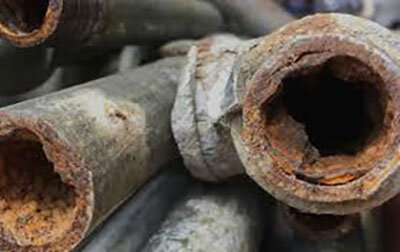What to Know About Galvanized Pipes
Many homes built before the 1970s have galvanized plumbing. Galvanized pipes are steel pipes covered with a protective layer of zinc.
Galvanized plumbing was a popular choice in new homes but was discontinued after discovering that the zinc coating erodes over time. As the outer layer of zinc wears away, corrosion can start to build up within the pipes causing the potential for harmful substances to affect your home's water supply.
Most galvanized pipes were used in the 1950s and 1960s with lead service lines, causing them to release lead as they erode. The lead released from the walls of these pipes contaminates the home's water supply. The ingestion of lead can be a health hazard.
Although lead water piping was discontinued in the 1960s, galvanized pipes were still in use as late as 1990. The corrosion caused by these pipes can build up in the water supply.
An easy way to determine if a home has galvanized pipes is to look where the piping enters the home and scratch the piping. If the pipe looks like a copper penny, then it is copper plumbing. If it is galvanized steel, the area will look silvery grey and have threads.
If the pipe is not copper or galvanized, it most likely is a plastic PVC or PEX pipe. PVC is typically white and PEX is usually blue, red, or white. Another material, polybutylene piping, could be a milky grey or black.
The average lifespan of galvanized piping is 40-50 years. However, plumbing that is well built, well installed, and well maintained can easily exceed this. If a house has galvanized pipes, it is essential to know how old they are. If the lines are from the 1960s or earlier, they will be near the end of their functional lifespan.


